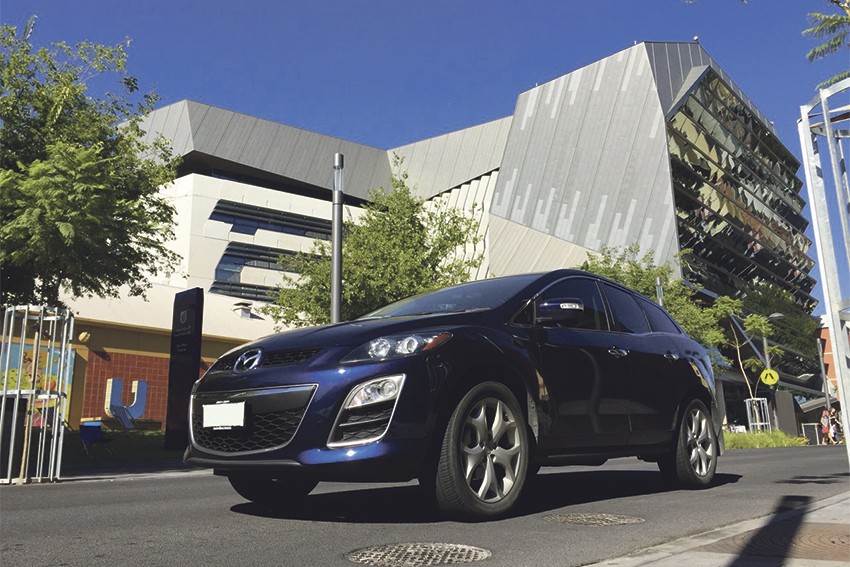Paver-gate: hiccups on Hindley

The tragic lesson learnt from Hindley Street’s ‘paver-gate’ saga is that the populist politics of the car still trump the ‘walkable’ and liveable’ city monikers that Adelaide loves to laud to the world, writes Chris Brisbin.
In 2011, Jan Gehl published his influential report Public Spaces & Public Life Study. Commissioned by the Adelaide City Council as a keystone of the Integrated Design Commission’s 5000+ integrated design strategy for inner Adelaide, Gehl’s aim was to “create a stronger coherence between the life of the city and planned or existing building structures”. It aimed to celebrate the public life of the city and its people, not its cars. In order to transition to a more people-friendly ground plane, the IDC and Gehl proposed traffic-calming tactics such as ‘road dieting’ and mixed car/pedestrian streets. However, the recent public furore over the paved surface of Hindley Street, and its impact on commuters, suggest that car movement through the West End is still a public priority, and not the design of ‘good people places’. Average commute times can be measured, while good design is less publicly tangible. So what makes ‘good people places’ in Adelaide? Put simply, they are places people want to be; that are safe, vibrant and fun to be around, and that nurture, embrace and invite occupation at varying scales – regardless of whether you are by yourself, on your lunchbreak with work friends, or in a herd of aimlessly wandering night-time revellers. It requires a nuanced application of varying-scaled public/private thresholds, durable materials of complementary tactility and form, respect for cultural heritage spaces and places, and most importantly, protection from the extremes of nature (sun, wind, and rain). Large-scale annual activities such as the Tour Down Under and the Adelaide Fringe writ large in the public imagination; they tend to occupy Adelaide’s major urban squares, while everyday social and commercial interactions generally occur in the residual urban space in-between our buildings and streets. Thus, the role of ACC’s urban design strategy has been to implement an ‘urban acupuncture’ strategy that targets specific areas of urban tension, without applying a unifying programmatic or aesthetic strategy. In mid-2014, motorists traversing Hindley Street began noticing a lack of traction on the new granite-paved road surface – especially when wet. Sensational local news media headlines indicted Hindley Street as “dangerous” and a “treacherous blunder”, fanning negative public perceptions about the role of design in contributing to high-quality urban environments. The perceived breadth of the traction problem quickly spread to the newly paved section of Grote Street that bisected Taylor Cullity Lethlean’s reimagined Victoria Square. In response, the ACC reduced speeds along both routes from 50 kilometres per hour to 25 and then to 10km/hr, while conducting a technical analysis of the surface’s traction. The locus of the traction problem was identified as the new honed 145mm cubed granite stone paving sets used as a consistent ground-surface material upon which pedestrians and cars could intermingle. Selected to provide an “attractive, protected and pedestrian-focused” street, the granite pavers offered visual variety and pedestrian durability: people and cars rarely get along well without an effective matchmaker! The urban design of the 100 metre strip between Liverpool and Register Street was collaboratively developed and funded through a partnership between the Commonwealth Government (under the Liveable Cities Program), South Australian Government, Adelaide City Council and UniSA. Guided by Hassell Studio’s 2013 masterplan for the growing City West campus of UniSA, Hassell’s urban-design strategy aimed to reconcile the dominating presence of cars on safe pedestrian movement through and occupation of the public realm. Through simple planting and the addition of a new tree-lined edge to an otherwise barren existing streetscape, Hassell designed occupiable urban edges capable of adapting to the dramatically changing nature of Hindley Street from day-to-night. Hassel’s urban design foresaw the impact of increasing public and private sector investment in education and health throughout the West End as a potential source of social, economic, and urban transformation that required the envisioning of permeable connections and pedestrian pathways through the West End as this transformation progressed. However, altruistic design intentions mean little in a prevailing culture of liability and accountability. In an era of ever increasing risk-averseness, of relentless finger-pointing and ‘blame-game’ brinkmanship, the tragic lesson learnt from the Hindley Street ‘paver-gate’ saga is that the populist politics of the car still trump the ‘walkable’ and liveable’ city monikers that Adelaide so desperately loves to laud to the world. The status quo of short-term ‘quick-win’ politics continues unabated and unquestioned at a time when long-term urban vision and ‘place-led’ resilience is fundamentally necessary in addressing the greatest urban-design and environmental challenges of our age. As Councillor David Plumridge has acknowledged, the 10km/hr speed limit promoted an urban domain in which “pedestrians and other traffic—cyclists and so on—can mingle in a shared space”: wouldn’t that have been a fantastic outcome for the West End? Instead, we received a $50,000 veneer of gritty bituminised ooze that masks the granite paver sets below – as if they never existed. Out of sight and out of mind. Dr Chris Brisbin, History & Theory Stream Coordinator (Architecture), School of Art, Architecture and Design, University of South Australia